| January 29, 2008 |  |
MoonDaily Advertising Kit |
| Previous Issues | Jan 28 | Jan 25 | Jan 24 | Jan 23 | Jan 22 |
The Storms May Tell Why Gas Giant Planets Are So Windy Tucson AZ (SPX) Jan 29, 2008
Tucson AZ (SPX) Jan 29, 2008A University of Arizona scientist, observing Jupiter with the Hubble Space Telescope last May, took some of the best images of two unusual giant storms that erupted from the planet last spring. Erich Karkoschka of the UA's Lunar and Planetary Laboratory is co-author on a scientific paper being published about Jupiter's giant storms in the Jan. 24 issue of the journal Nature. When the Pluto ... more Scientists Get First Images Of Earth Flyby Asteroid 2007 TU24  Pasadena CA (SPX) Jan 28, 2008
Pasadena CA (SPX) Jan 28, 2008Scientists at NASA's Jet Propulsion Laboratory in Pasadena, Calif., have obtained the first images of asteroid 2007 TU24 using high-resolution radar data. The data indicate the asteroid is somewhat asymmetrical in shape, with a diameter roughly 250 meters (800 feet) in size. Asteroid 2007 TU24 will pass within 1.4 lunar distances, or 538,000 kilometers (334,000 miles), of Earth on Jan. 29 at 1 ... more Volcanic deposits may aid lunar outposts  Washington (UPI) Jan 23, 2007
Washington (UPI) Jan 23, 2007 A U.S. study of radar images of the moon suggests deposits from early lunar volcanoes might be useful to astronauts at lunar stations. Bruce Campbell and associates at the National Air and Space Museum said ancient volcanic eruptions on the Moon produced deposits of fine-grained, often glass-rich, pyroclastic material. In some places, such as at the Aristarchus Plateau, the deposits can ... more NG-Built Antennas Helping Provide Data On Moon's Thermal History For Japan's KAGUYA (SELENE) Mission  Carpenteria CA (SPX) Jan 23, 2008
Carpenteria CA (SPX) Jan 23, 2008Four specialized antennas built by Northrop Grumman Corporation for the Japanese Aerospace Exploration Agency (JAXA) are functioning as expected after deploying successfully onboard the SELenological and ENgineering Explorer "KAGUYA" (SELENE), Japan's first large lunar explorer. The four dipole antennas deployed to their 15-meter (49.5 feet) full design length Oct. 31. Manufactu ... more Near-Earth Asteroid 2007 TU24 To Pass Close To Past Earth On Jan 29  Pasadena CA (SPX) Jan 23, 2008
Pasadena CA (SPX) Jan 23, 2008Asteroid 2007 TU24, discovered by the Catalina Sky Survey on October 11, 2007 will closely approach the Earth to within 1.4 lunar distances (334,000 miles) on 2008 Jan. 29 08:33 UT. This object, between 150 and 600 meters in diameter, will reach an approximate apparent magnitude 10. 3 on Jan. 29-30 before quickly becoming fainter as it moves further from Earth. For a brief time the asteroid wi ... more |
lunar
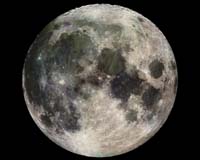 solarscience 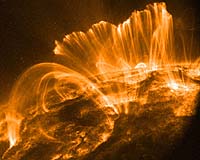 lunar 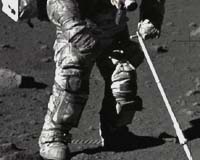 |
 Washington DC (SPX) Jan 16, 2006
Washington DC (SPX) Jan 16, 2006NASA's Constellation Program has released a broad agency announcement for study proposals to evaluate human landing craft concepts for exploring the moon. The Altair spacecraft will deliver four astronauts to the lunar surface late in the next decade. NASA plans to establish an outpost on the moon through a sustainable and affordable series of lunar missions beginning no later than 2020. " ... more NASA Quest To Find Water On The Moon Moves Closer To Launch  Moffett Field, CA (SPX) Jan 15, 2008
Moffett Field, CA (SPX) Jan 15, 2008Cameras and sensors that will look for the presence of water on the moon have completed validation tests and been shipped to the manufacturer of NASA's Lunar Crater Observation and Sensing Satellite. The science instruments for the satellite, which is known as LCROSS, departed NASA's Ames Research Center in Moffett Field Calif., for the Northrop Grumman Corporation's facility in Redondo Beach, C ... more Europe's Next Ride To The Moon: Chandrayaan-1  Paris, France (SPX) Jan 14, 2008
Paris, France (SPX) Jan 14, 2008Excitement is rising as ESA is in the final stages of preparation for the first collaborative space mission with the Indian Space Research Organisation (ISRO). Chandrayaan-1 will study the Moon in great detail and be the first Indian scientific mission leaving the Earth's vicinity. Europe is supplying three instruments for the mission. The Moon retains its fascination for planetary s ... more NASA's Next Moon Mission Spacecraft Undergoing Critical Tests  Greenbelt MD (SPX) Jan 11, 2008
Greenbelt MD (SPX) Jan 11, 2008NASA's next mission to Earth's closest astronomical body is in the midst of integration and testing at NASA's Goddard Space Flight Center in Greenbelt, Md. The Lunar Reconnaissance Orbiter, known as LRO, will spend at least a year mapping the surface of the moon. Data from the orbiter will help NASA select safe landing sites for astronauts, identify lunar resources and study how the moon's envir ... more |
lunar
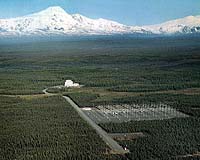 india-space 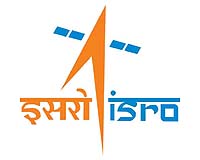 lunar 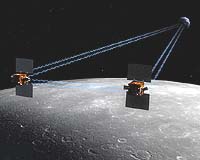 |
 Salt Lake City UT (SPX) Jan 02, 2008
Salt Lake City UT (SPX) Jan 02, 2008By analyzing images from NASA's Cassini Radar instrument, a Brigham Young University professor helped discover and analyze mountains on Saturn's largest moon, additional evidence that it has some of the most earthlike processes of any celestial body in the solar system. Planetary scientist Jani Radebaugh is lead author of the discovery paper in the December issue of the astronomy journal I ... more Major lunar probe begins full operation: Japan  Tokyo (AFP) Dec 26, 2007
Tokyo (AFP) Dec 26, 2007Japan's first lunar probe, the world's most extensive mission to the moon in decades, has gone into full operation on schedule, the space agency announced Wednesday. The Kaguya orbiter completed a two-month initial phase to inspect the functioning of all the equipment before starting its main mission on Friday last week, the Japan Aerospace Exploration Agency (JAXA) said. "Normal operati ... more India And Russia Begin Talks On Chandrayaan-II  New Delhi (PTI) Dec 19, 2007
New Delhi (PTI) Dec 19, 2007India has begun technical discussions with Russia on the joint moon mission Chandrayaan-II which is expected to be launched in 2011-12. Scientists are planning to land a rover on the moon for carrying out chemical analysis of the lunar surface and explore other resources on the earth's natural satellite. "In situ chemical analysis and resource exploration is the main objective of Chandrayaan-II, ... more Hot Spot On Enceladus Causes Plumes  San Francisco CA (SPX) Dec 18, 2007
San Francisco CA (SPX) Dec 18, 2007Enceladus, the tiny satellite of Saturn, is colder than ice, but data gathered by the Cassini-Huygens Mission to Saturn and Titan has detected a hot spot that could mean there is life in the old moon after all. In fact, for researchers of the outer planets, Enceladus is so intellectually hot, it's smokin'. The heat being generated on the moon's south pole at a hot spot is enough to eject p ... more
|
lunar
 launcher 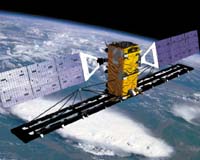 lunar 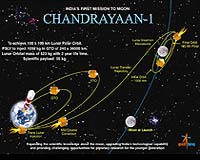 |
| Previous Issues | Jan 28 | Jan 25 | Jan 24 | Jan 23 | Jan 22 |
| The contents herein, unless otherwise known to be public domain, are Copyright 1995-2007 - SpaceDaily. AFP and UPI Wire Stories are copyright Agence France-Presse and United Press International. ESA Portal Reports are copyright European Space Agency. All NASA sourced material is public domain. Additional copyrights may apply in whole or part to other bona fide parties. Advertising does not imply endorsement, agreement or approval of any opinions, statements or information provided by SpaceDaily on any web page published or hosted by SpaceDaily. Privacy statement |